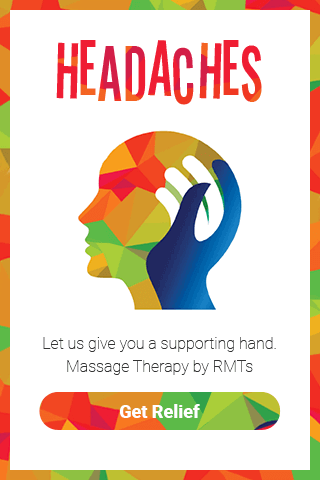The Touch Institute Study
While it is difficult to measure the effect of massage on PMS (for reasons discussed above), at least one group of researchers tried to.
In a 2000 study published in the Journal of Psychosomatic Obstetrics and Gynecology, researchers from the Touch Research Institute in the University of Miami School of Medicine investigated the efficacy of massage therapy for PMS symptoms.
For this study, they recruited 24 women aged 19 – 45 years and suffering from PMDD(premenstrual dysphoric disorder, a more severe form of PMS).
These women were randomly assigned to either massage therapy or relaxation techniques (breathing, stretching and yoga-like exercises etc.). The massage group received massage therapy twice a week for 5 weeks. Each massage session took 30 minutes.
In half of that time, the massage techniques used included kneading the feet and thighs; stroking the forehead, hands, arms, shoulders and feet; pressing down on the shoulders; and circular stroking of the abdomen while lying face upward.
In the other half, the women lay face downward while they were massaged on the low back, neck and shoulders. Furthermore, their ankles were stretched, calf muscles compressed, thigh muscles kneaded and legs stroked.
The relaxation group was also given a roughly equivalent muscle relaxation therapy for the same duration.
The results of the study showed that the massage group experienced immediate relief from pain,anxiety and depression following each session.
In addition, they experienced long-term improvements in pain, fluid retention and overall menstrual distress.
While this study is flawed, it is hard to come by a better designed study investigating the use of massage for PMS. In spite of its flaws, the results of this study are still good enough to conclude that massage has some benefits for improving PMS symptoms.
Women with endometriosis and painful menstruation, also known as dysmenorrhea, experienced a significant reduction in the severity of pain after receiving 20 sessions of massage therapy, according to recent research.
The study, “The effects of massage therapy on dysmenorrhea caused by endometriosis,” involved 23 women diagnosed with endometriosis and suffering from dysmenorrhea. These subjects ranged in age from 21 to 40, and about 70 percent of them reported menstrual pain both during and after menstruation.
Before the start of the intervention, participants completed a survey with questions about personal and fertility information. They also rated their pain on a visual analog scale. Subjects completed the same survey and again rated their pain on the visual analog scale immediately after their first post-intervention menstruation and again six weeks later.
For each participant, the intervention consisted of 20 massage sessions, which lasted 20 minutes each time. The study’s authors did not specify when and where each of these 20 sessions took place. The routine for each session involved massaging specific points on the woman’s abdomen, sides and back, using a massage oil for lubrication.
“The massage therapy technique consists of pressuring 24 specific points [on the] abdomen [and] 10 points on the sacrum, each one for two minutes, while hands keep moving on the abdomen, sides and sacrum,” state the study’s authors.
Results of the research showed the severity of pain due to dysmenorrhea decreased significantly among the subjects immediately and six weeks after the 20 massage sessions. In fact, the reduction of pain among participants was even greater six weeks later than it was during the first post-intervention menstruation.
“The findings show that there’s a significant change in the level of pain immediately after the intervention [as compared to] before the intervention, while the effects of massage increase six weeks after the intervention,” state the study’s authors. “The level of analgesia reached 65.2 percent six weeks after the intervention from 34.8 percent immediately after the intervention.”
The researchers conclude massage therapy can be used to reduce menstrual pain caused by endometriosis, and that massage is an inexpensive method of reducing this pain with no reported side effects.
“The findings showed that there was a statistically significant difference between the intensity of pain before the intervention started, immediately after, and also six weeks after the intervention ended,” state the study’s authors. “It seems massage therapy can be a fitting method to reduce the menstrual pain caused by endometriosis.”
Authors: M. Valiani, N. Ghasemi, P. Bahadoran and R. Heshmat.
Sources: Department of Midwifery, School of Nursing and Midwifery, Isfahan University of Medical Science, Isfahan, Iran; International Manual College of France; and Acupuncture School of Shanghai. Originally published in the Iranian Journal of Nursing and Midwifery Research (2010) 15:4.Abdominal massage significantly decreased the severity of gastrointestinal symptoms and increased bowel movements among people with constipation, according to recent research.
